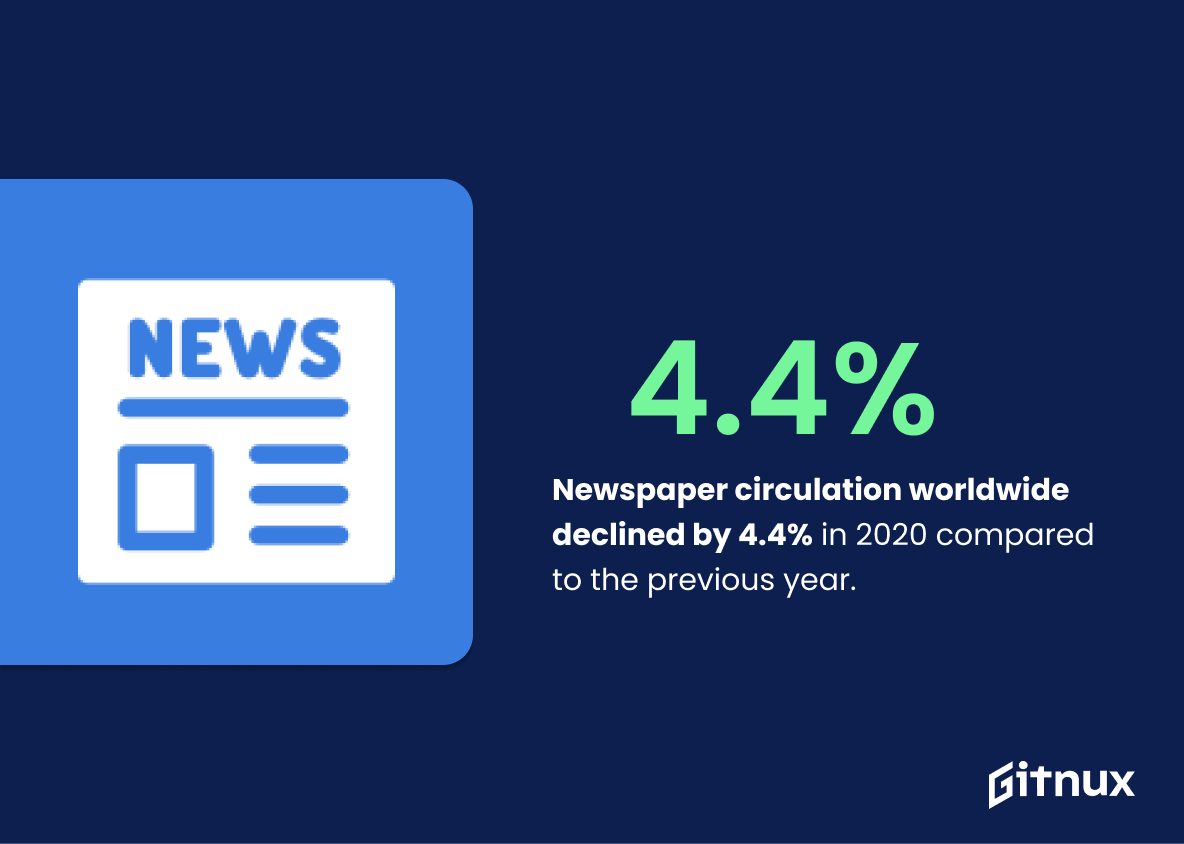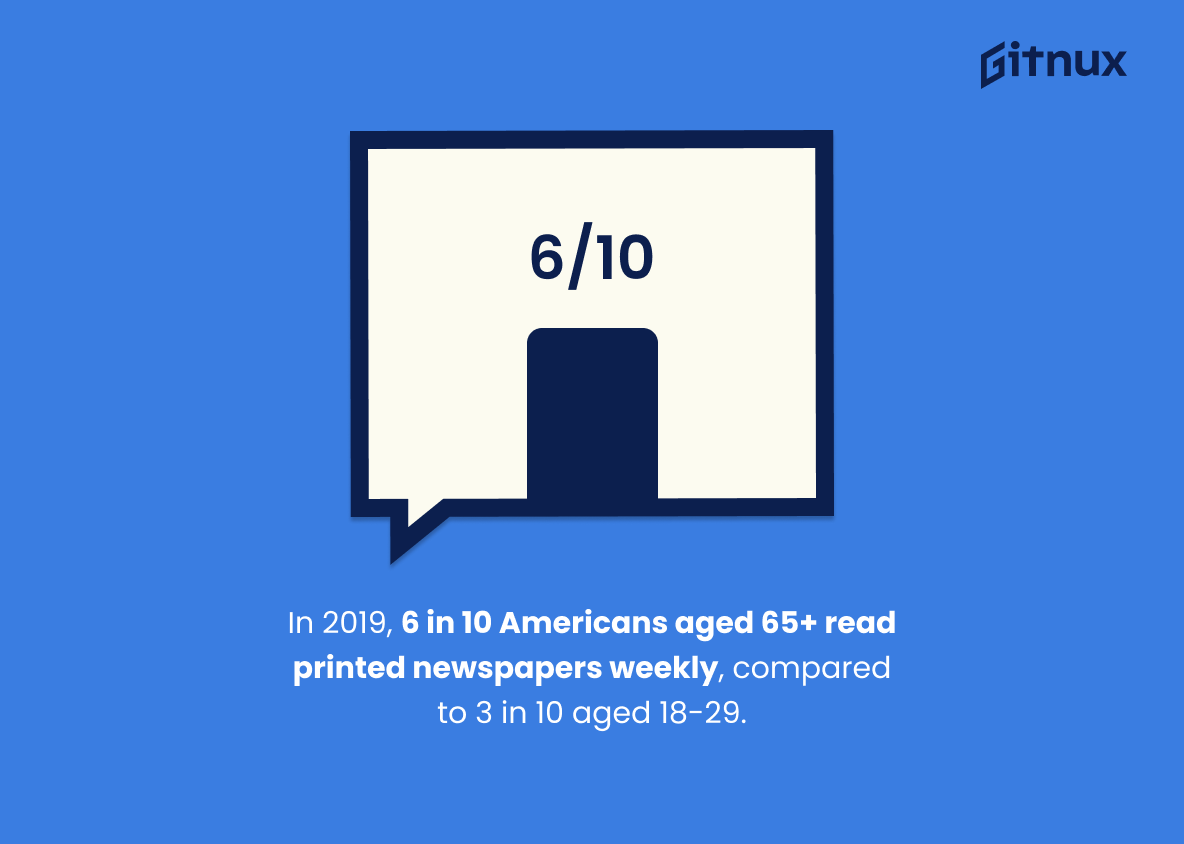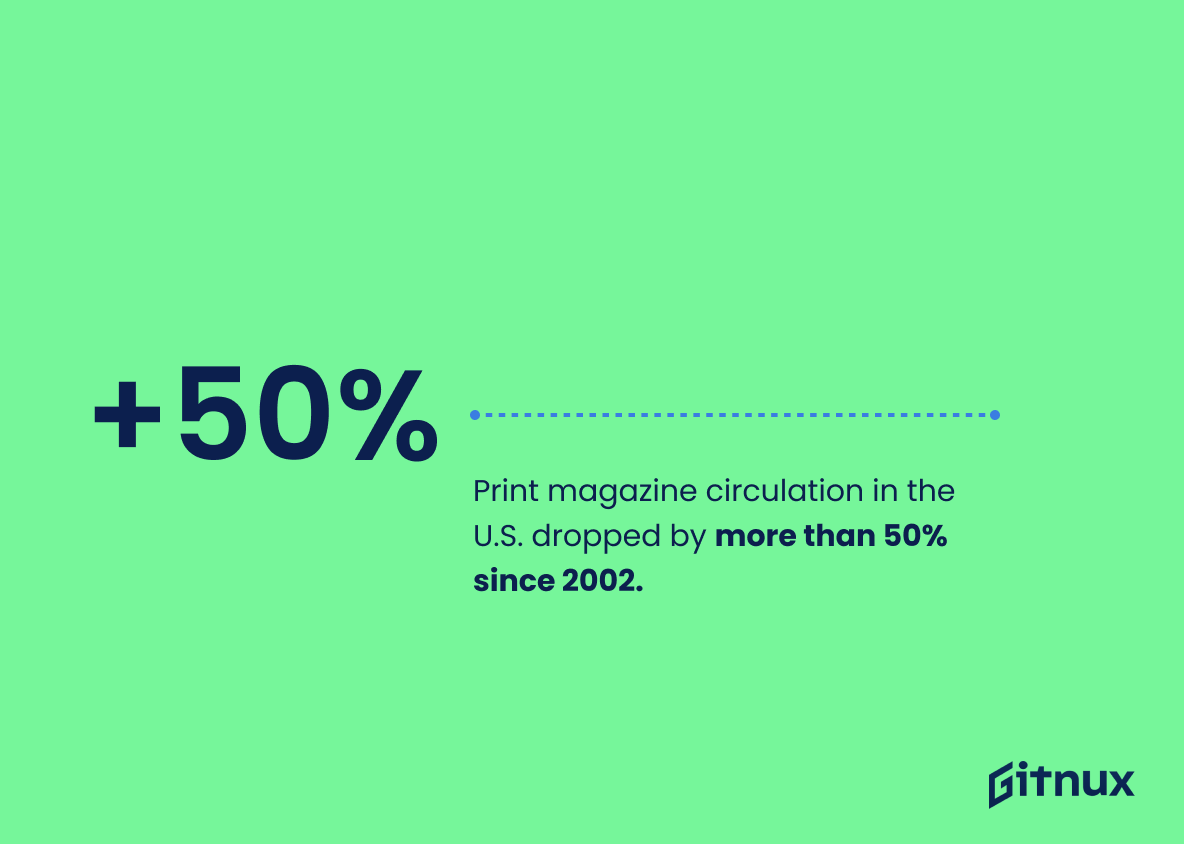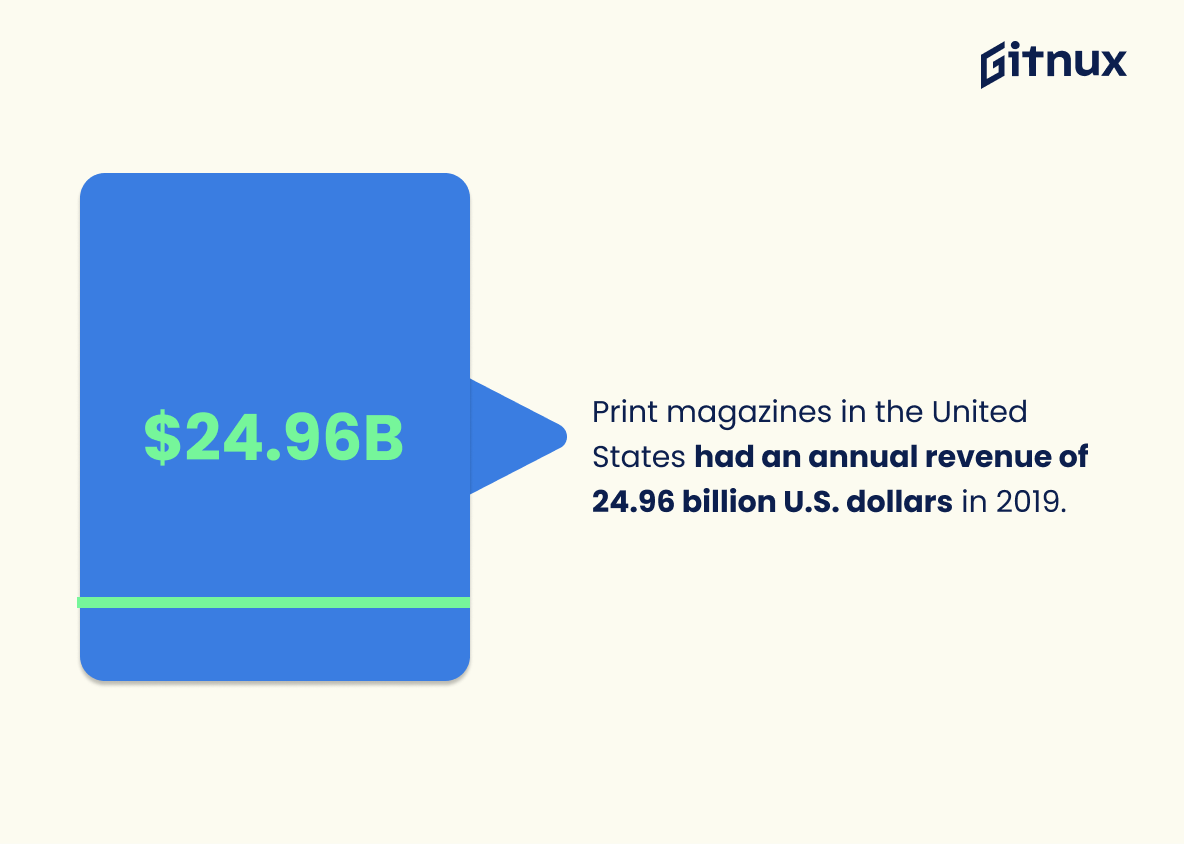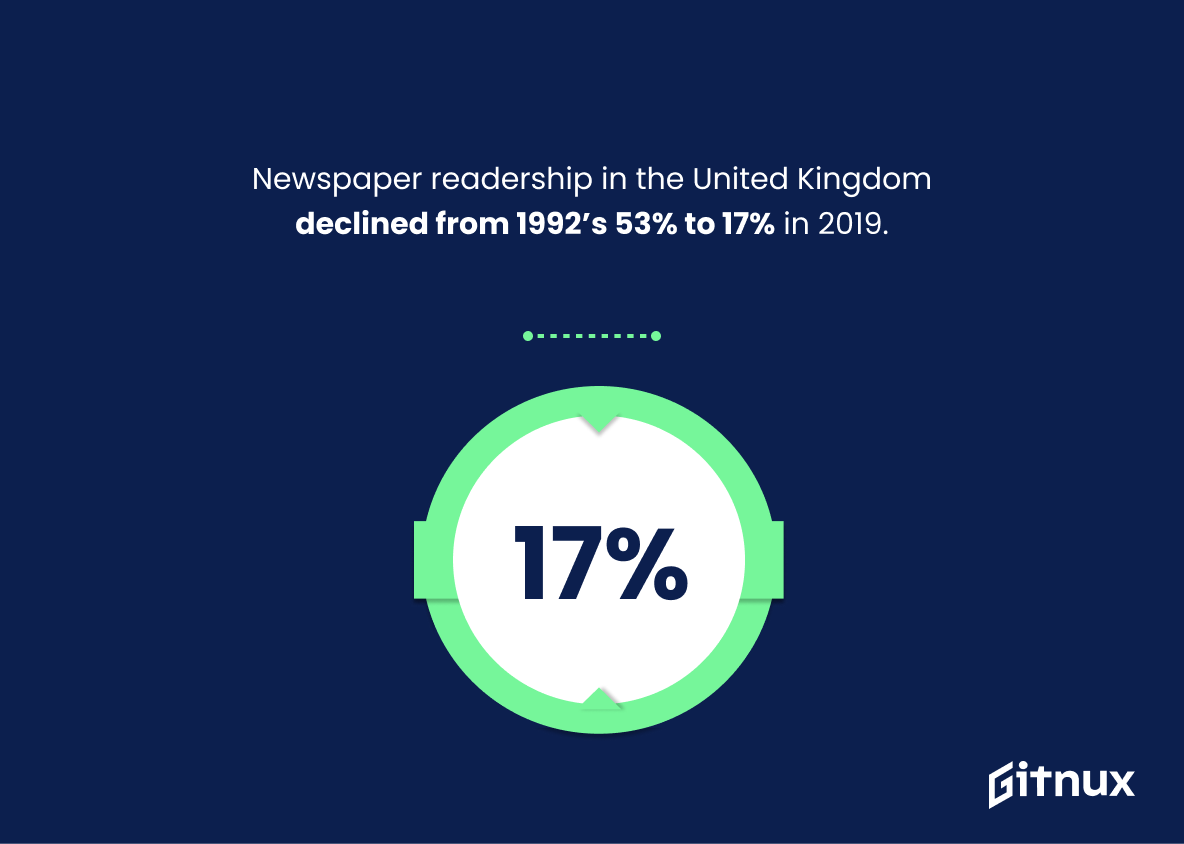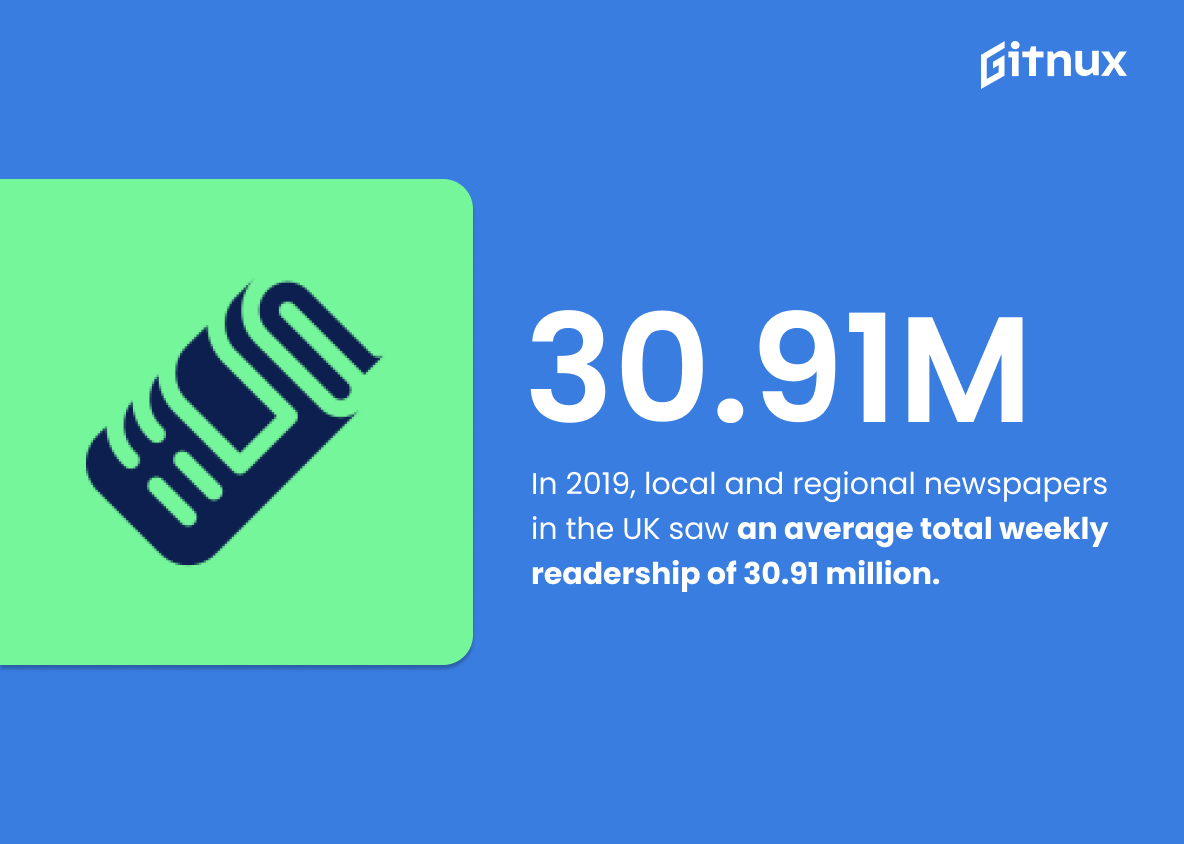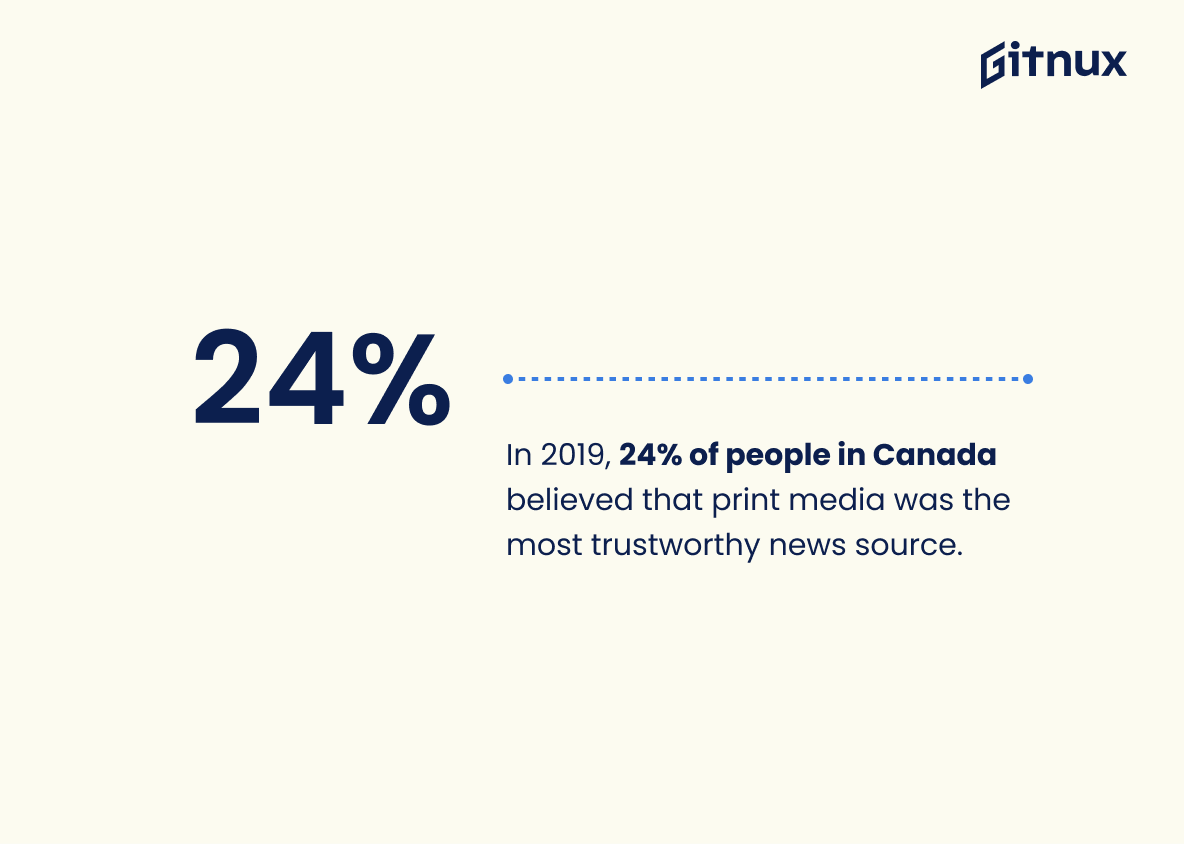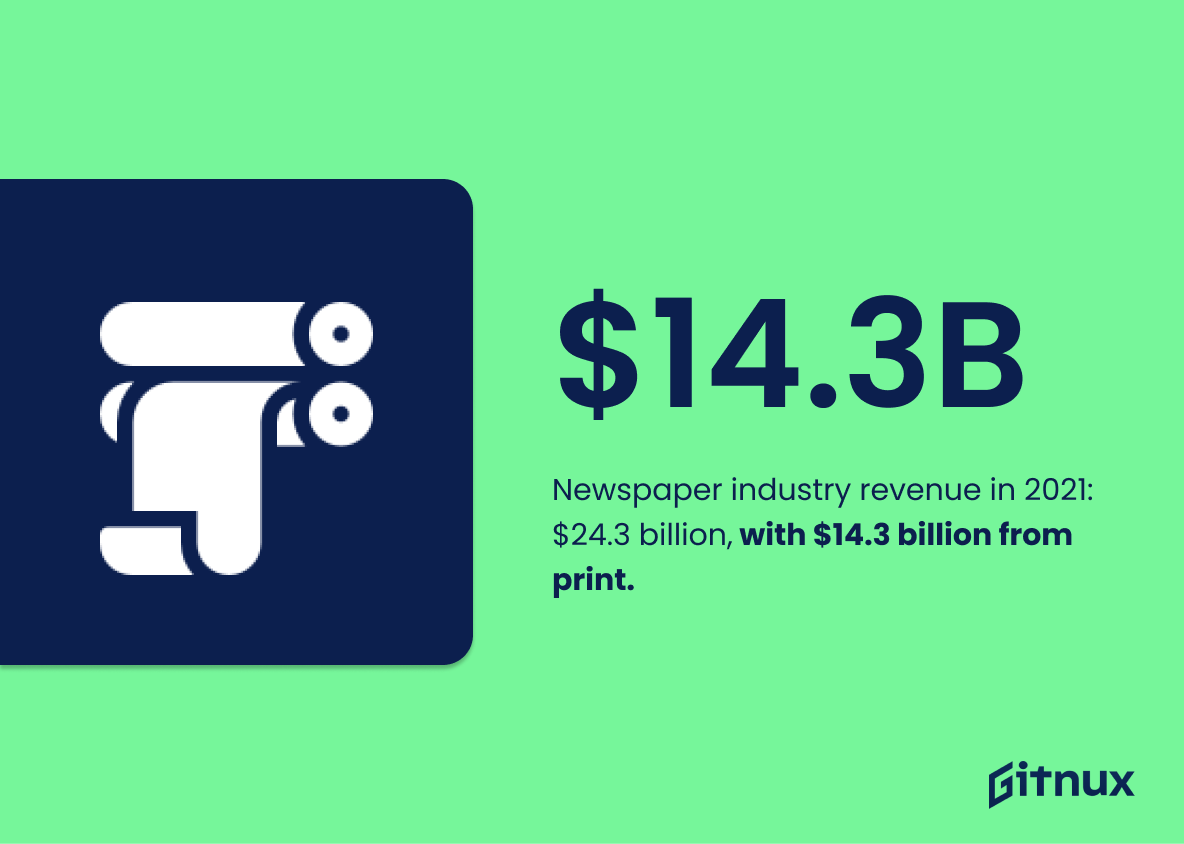The print media industry has seen a significant shift in recent years, with digital alternatives becoming increasingly popular. However, despite this trend, there are still many people who prefer to read printed books and newspapers over their digital counterparts. This blog post will explore the current statistics of print media around the world – from newspaper advertising revenue in the United States to magazine circulation in South Korea – providing an overview of how it is faring today.
This statistic paints a stark picture of the decline of print newspaper advertising revenue in the United States over the past 15 years. It serves as a reminder of the changing landscape of media consumption and the need for print media outlets to adapt to the digital age. It is a key indicator of the challenges facing the print media industry and the need for innovative solutions to remain competitive.
58% of people prefer to read printed books and newspapers over digital alternatives.
This statistic is a powerful indicator of the enduring appeal of print media. It shows that despite the rise of digital media, a majority of people still prefer the tactile experience of reading printed books and newspapers. This is an important point to consider when discussing the future of print media and its place in the modern world.
Print Media Statistics Overview
Newspaper circulation worldwide declined by 4.4% in 2020 compared to the previous year.
This statistic is a telling indication of the state of print media in the current climate. It highlights the fact that, despite the rise of digital media, print media is still struggling to keep up with the times. This statistic is a stark reminder of the challenges that print media faces in the modern world, and serves as a warning to those in the industry that they must adapt or risk becoming obsolete.
In 2019, 6 out of 10 Americans aged 65 or older read printed newspapers at least weekly, while only 3 out of 10 aged 18-29 did.
This statistic is a telling indication of the generational divide in print media consumption. It shows that while older generations still rely on printed newspapers for their news, younger generations are increasingly turning to digital sources. This is an important factor to consider when discussing the future of print media and its relevance in the digital age.
Print magazine circulation in the U.S. dropped by more than 50% since 2002.
This statistic serves as a stark reminder of the decline of print media in the U.S. since 2002. It highlights the need for print media outlets to adapt to the changing landscape of media consumption and find new ways to reach their audiences. It also serves as a warning to other print media outlets that they must stay ahead of the curve or risk becoming obsolete.
Print magazines in the United States had an annual revenue of 24.96 billion U.S. dollars in 2019.
This statistic is a testament to the enduring power of print media in the United States. Despite the rise of digital media, print magazines still generate a significant amount of revenue, demonstrating that there is still a large audience for print media. This statistic is an important reminder that print media is still a viable and profitable industry.
Newspaper readership in the United Kingdom declined from 1992’s 53% to 17% in 2019.
This statistic is a stark reminder of the changing landscape of media consumption in the United Kingdom. It highlights the dramatic shift away from print media and towards digital media, and serves as a warning to those in the print media industry that they must adapt to the changing times or risk becoming obsolete.
In 2019, local and regional newspapers in the UK saw an average total weekly readership of 30.91 million.
This statistic is a powerful indicator of the continued relevance of print media in the UK. It shows that despite the rise of digital media, local and regional newspapers still have a large and engaged readership. This is an important point to consider when discussing the future of print media and its place in the media landscape.
Print advertising expenditure in India was valued at approximately 132.4 billion Indian rupees in 2020.
This statistic is a testament to the power of print media in India. It shows that despite the rise of digital media, print advertising is still a major force in the country. This statistic is a reminder that print media is still a viable option for businesses looking to reach their target audience in India. It also highlights the importance of print media in the Indian market, and how it can be used to effectively reach potential customers.
In 2019, 24% of people in Canada believed that print media was the most trustworthy news source.
This statistic is significant in the context of a blog post about Print Media Statistics because it demonstrates that a significant portion of Canadians still view print media as a reliable source of news. This indicates that print media is still a viable option for news outlets and that it is still a trusted source of information for many Canadians.
In 2018, print newspaper ad revenue in Germany reached 1.1 billion euros.
This statistic is a testament to the enduring power of print media in Germany. Despite the rise of digital media, print newspaper ad revenue in Germany has remained strong, demonstrating that print media is still a viable option for advertisers. This statistic is an important reminder that print media is still a viable option for businesses looking to reach their target audience.
66% of the Japanese population reads printed newspapers daily.
This statistic is a testament to the enduring power of print media in Japan. It shows that despite the rise of digital media, printed newspapers remain a popular source of news and information for the majority of the population. This statistic is an important reminder that print media is still a viable and relevant form of communication in the modern world.
The total revenue of the newspaper industry in 2021 is estimated to reach $24.3 billion, of which $14.3 billion will come from print.
This statistic is a powerful indicator of the continued relevance of print media in 2021. Despite the rise of digital media, print media is still a major source of revenue for the newspaper industry, accounting for nearly 60% of total revenue. This statistic is a testament to the staying power of print media and its ability to remain a viable source of income for the industry.
Print represents 11% of total marketing expenditures in France in 2019.
This statistic is a testament to the enduring power of print media in France. Despite the rise of digital media, print still commands a significant portion of the marketing budget, indicating that it is still a viable and effective way to reach consumers.
In 2021, print advertising spending in Brazil is expected to fall to $2.86 billion.
This statistic is a telling indication of the state of print media in Brazil. It shows that print advertising spending is expected to take a significant hit in 2021, indicating that print media is not as popular as it once was. This is an important statistic to consider when discussing the current state of print media and its future prospects.
As of 2020, 23% of South Africans prefer print media as their main source of news.
This statistic is a telling indication of the continued relevance of print media in South Africa. It shows that despite the rise of digital media, print media still holds a significant portion of the news market. This is an important point to consider when discussing the future of print media and its potential to remain a viable source of news.
In 2019, print media contributed 28.17% to the total advertising expenditure in South Korea.
This statistic is a testament to the continued relevance of print media in South Korea. It shows that despite the rise of digital media, print media still plays an important role in the country’s advertising landscape. This statistic is important for anyone looking to understand the current state of print media in South Korea and how it compares to other forms of advertising.
Conclusion
Print media remains a popular and trusted source of news, information, and advertising around the world. Despite digital alternatives becoming increasingly available in recent years, print newspapers still generate significant revenue for many countries. In 2020 alone, newspaper advertising revenue in the United States was approximately 14.8 billion U.S dollars while magazines had an annual revenue of 24.96 billion U.S dollars that same year – both figures significantly lower than their 2005 numbers but still substantial nonetheless. Additionally, 58% of people prefer to read printed books and newspapers over digital alternatives; 64% are more likely to trust print ads compared to online ones; 66% of Japanese population reads printed newspapers daily; 23-34 percent adults across different countries read print papers weekly or monthly depending on region etc., showing how much readership is retained by this medium even today despite its decline since 2002/2005 when it peaked at 49+billion US Dollars respectively for Newspapers & Magazines worldwide .
References
0. – https://www.www.pewresearch.org
1. – https://www.www.bsg.ox.ac.uk
2. – https://www.www.statista.com
3. – https://www.www.twosidesna.org
4. – https://www.www.journalism.org
ZipDo, cited June 2023: Print Media Statistics
